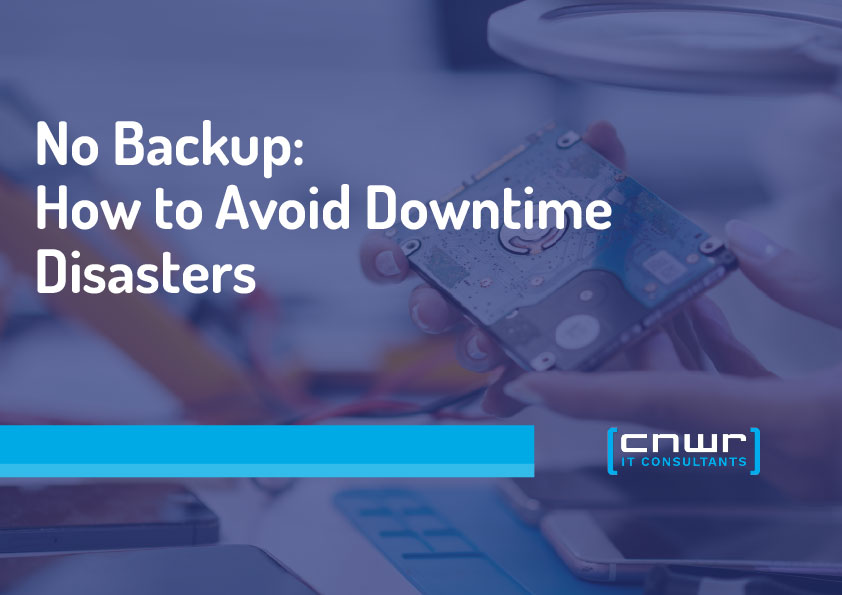Nobody gets into IT because they love explaining to the CEO why the coffee machine works but the network doesn’t. Yet, ask any MSP who’s been on the business end of a system outage, and you’ll find the story always ends with a sheepish, “Well, we thought our backups were fine.” Painful, isn’t it? Especially when the only thing flatter than your uptime percentage is your enthusiasm for hunting down corrupted backups at 2 AM.
System downtime is more than an inconvenience. For MSPs and their partners, it’s a credibility crusher and a gift-wrapped present for the competition. Fortunately, preventing downtime isn’t an arcane art reserved for the wise and bearded. It comes down to one unsung hero in the world of IT drudgery: a deliberate, tested, and business-aligned backup strategy.
This post will serve up some wisdom as we dissect what your backup practices say about how “up” you’ll stay when the next disaster calls.
Pro tip: Backup practices are just one piece of a stable IT environment. For a look at the full picture, read our blog on From Chaos to Control: Building a Stable, Secure, and Scalable IT Environment.
The Uptime-Downtime Seesaw
If uptime is the IT world’s holy grail, downtime is the goblin that steals it when you leave the server room door open. The stakes? For global giants, minutes of downtime are measured in millions lost (Splunk estimates $9,000 lost per minute). For MSPs, one missed SLA or a botched restoration and your reputation sags faster than aging cabling.
But downtime isn’t just about the numbers. It’s about the client’s phone calls (none of them starting with “thank you”), panicked escalations, and that fun exercise known as writing a root cause analysis that reads like a tragic novella.
Common causes? Hardware goes out with style. Human error lurks in every config file or mis-clicked UI (trust us, we’ve all selected “Delete All” before our morning espresso). Then there are ill-timed updates, DDoS attacks, ransomware, acts of divinity, and sometimes, mysterious incidents labeled “gremlins.”
What do all these mishaps share? They’re troublesome. But with a robust, thoroughly tested backup strategy, they become survivable.
Why Modern Backup Strategies Matter (and No, Tape Drives Alone Won’t Cut It)
Backups aren’t the dusty safety net you update “when you remember.” They are your first and best defense against disasters, both cosmic (ransomware, floods) and comical (Bob tripping over a power cable).
The 3-2-1 mantra. The industry’s golden rule hasn’t changed for a reason. Three copies of your data on two different media with one copy offsite remains the baseline (and yes, you do need offsite—even if your server closet is “pretty safe, usually”). But is that all there is to it?
Not anymore.
A modern backup strategy includes:
- High backup frequency (think minutes, not hours)
- Immutable backups (so even ransomware has to swipe left)
- Regular recovery testing (or, how to avoid unpleasant surprises during a real crisis)
- Alignment with service levels and business needs (because restoring Aunt Edna’s cat videos might not be high-priority—even if she thinks it is)
The modern MSP must treat backups as business-critical infrastructure, not an afterthought you dust off on World Backup Day (that’s March 31, by the way, and yes, you missed it again).
The Bad, the Ugly, and the MSPs Who Learn
Consider the common backup strategies we see. Maybe you recognize a few…
- The “Set it and Forget it” approach. Backups are scheduled, but no one’s checked if they actually work since the Obama administration.
- The “One is Enough” gamble. Only a single local copy. It’s fine until a burst water pipe finds a home in your server rack.
- The “Audit by Hope” routine. Every quarter, you trust that “green status icon” to mean your backups aren’t actually full of digital garbage.
- The “Siloed SaaS” mistake. Your client’s precious data is scattered across SaaS apps and endpoints, blissfully unprotected because “surely the cloud vendor handles backups, right?” (Spoiler: they don’t.)
Each of these is less a strategy and more an audition for a help desk horror story anthology.
Backup Strategies that Actually Work (And Get You Back Pats)
What separates MSPs sleeping soundly from MSPs composing apologies at 3 AM? Here’s what goes into backup plans that prevent downtime and actually deliver on uptime promises:
1. Realistic (and Documented) Service Level Agreements
Set honest expectations with your clients. Not all data deserves the same Recovery Point Objective (RPO) or Recovery Time Objective (RTO). Business-critical apps? Backed up every fifteen minutes with lightning-fast restore times. Aunt Edna’s aforementioned cat videos? Weekly is fine.
Get those SLAs in writing, review them quarterly, and avoid making promises about “instant restoration” unless you are, in fact, a wizard.
2. Frequent and Tiered Backups
Gone are the days of once-a-night full backups. Block-level incrementals now make it realistic to backup often (every hour, every fifteen minutes, whatever your applications demand). Use a tiered approach for different workloads. Critical virtual machines get more love. Low-importance archives, less frequently, and with cheaper storage.
3. The 3-2-1 Rule (Plus)
Yes, you need three copies. On two media types. One offsite (the cloud counts if it’s immutable). But add a little modern flavor:
- Use both local disk and cloud storage.
- For especially sensitive or regulated industries, consider immutable cloud backups (unchangeable even by rogue admins).
- Avoid relying exclusively on tape. It’s fine for archives, but don’t try to impress anyone by restoring a 1TB SQL data set from tape during an outage.
4. Cloud and Endpoint Coverage
SaaS apps (think Office 365, Google Workspace, Salesforce) are not automatically backed up. Ensure your backup solution covers these environments. Same for endpoints. The laptop left on the train? Its files are now your problem, too.
5. Automated Testing and Recovery Drills
Nothing says “proactive MSP” like quarterly (or monthly) restoration drills. Regularly simulate disasters and attempt restores. Document the steps, timing, and hiccups. If you’ve never done it before, get ready to learn that “fast restore” is more myth than reality unless you’ve actually practiced.
6. Automation and Runbook Rigor
Automate disaster recovery plans. Use runbooks for multi-tier apps where server start order matters. The more you automate (with clear, human-friendly instructions), the less your future self will despise you in a crisis.
Of course, don’t forget to test your “automated failover” before listing it as a feature on your website.
7. Security, Compliance, and Visibility
Encrypt your backups, implement access controls, and document retention policies. Don’t hoard gigabytes of data you don’t need (GDPR enforcement officers make poor lunch companions).
Visibility matters. Use backup management dashboards to quickly answer, “Is everything protected?” and “When did we last actually run a restore?” The answer “I’ll check and get back to you” is a reputation killer.
When Backups Fail: Disaster Recovery and the Art of the Comeback
Everyone’s backups fail eventually. (Yes, even you, Mr. “We’ve Never Lost a Byte.”) What matters is how fast and how gracefully you recover. That’s where proper backup testing, documentation, and partnership with serious vendors save the day.
A restoration that starts quickly, finishes reliably, and returns users to productivity with minimal fuss? That’s the stuff that earns you raving testimonials, not just contract renewals.
More importantly, it’s what separates real MSPs from the “my cousin does IT” crowd.
Pro Tips Brought to You by Decades of MSP Scars
- Never trust backups you haven’t restored in the last 90 days.
- If a backup status icon flashes amber, it doesn’t mean wait for it to fix itself.
- Be kind to your future self. Label everything. Document, document, document.
- Assume every disaster will start on a Friday at 4:58 PM, and plan accordingly.
- Only test restores to systems you can afford to lose (once bitten, twice shy).
Stronger Uptime Starts with Smarter Backups
The search for five nines of uptime will never be a glamorous task. But it does reward the diligent, the skeptical, and the perpetually caffeinated. Your backup strategy is more than a technical obligation. It’s a reflection of your commitment to your clients and to your business reputation.
If your backups only exist “just in case,” you’re gambling with your uptime, your contracts, and your hard-won peace of mind.
CNWR specializes in modern, tested, and business-aligned backup and recovery for MSPs and their clients. Don’t leave your uptime to fate. Partner with the pros who have earned their scars (and their five-star reviews).
Contact CNWR today to schedule a real-world backup audit and uptime consultation…because the next outage is only as far away as your weakest backup.




